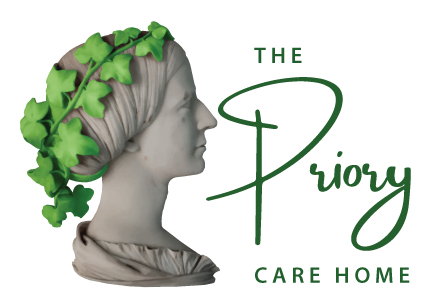The History of Priory House
From hence a long reach leads us to Llandogo, situated on the right bank of the river about seven miles from Monmouth. Tiddenham Hill rises prominently in the foreground of this sweet village, which consists of numerous dwellings studded along the side of a steep and lofty eminence, mantled with thick and picturesque woods.
Nearly in the centre of the hill is a deep ravine, called “Cleddon Shoots”, down which in the Winter there is a beautiful cascade. A pretty view of the river, which forms a smooth bay, with the extensive tract of woodland called Huddknolls nearly opposite, may here be obtained.
The Wye now becomes subject to the influence of the tide, and its hitherto crystal and translucid wave sullied with the turbid waters of the Severn Sea. Coedithelweir is a great fall of water beneath Huddknolls Wood.
This is a description of Llandogo two years before The Priory was built in 1840 on Tiddenham Hill, near Cleddon Shoots which is confirmed by two stones set in the building, one above the front entrance and another at the rear. The house was built on a level site overlooking the village of Llandogo and formerly known as The Falls.
The Priory now occupies three acres of land although initially it had more than one hundred and sixty and enjoys magnificent views over the Wye Valley and river Wye.
A history of Monmouth published in 1904 states that the chief residence in the village, The Priory, was built by lady Gough about 1846 but we know this date is incorrect. However, we are sure that it was the work of the Gough family who at the time owned a good deal of land in Llandogo and from 1864 occupied a nearby house.
The Gough family were primarily river barge operators who carried essential goods, mainly timber up the river Wye prior to the railway, these barges were known as sloops or trows. These vessels weighed anything from thirty to eighty tons and upwards, and the nearby village of Brockweir was a mart for the reception of goods, chiefly corn, hoops and fagots (bundles of sticks) brought in from Bristol.
With the introduction of modern rail travel in the 1820’s and work on the Wye Valley line commencing in 1874, there was a decline in the need for the river barges. We must assume that the Gough family anticipated this and either sold or developed land to raise money. By 1940 the Gough House as it is locally known was in a state of disrepair. However, the ruins are just visible to this day in the woods above The Priory.
By 1856 The Priory was owned by Francis Robinson and in 1859 before his death in 1870 it was passed to his daughter Anna (1821-1897). Anna was a widow and became the second wife of an Italian patriot in exile. Antonio Carlo Napoleone Gallenga (1810-1895), they had two children Mary Anne who was one of the first women to go to Cambridge where she read mathematics but died at the age of twenty-four not far from the house and Guy Hardwin who seems to have been a conceited young man whose relationship with his father deteriorated early.
Gallenga’s father had served with Napoleon in the French army for about ten years and when the French Revolution of 1830 caused ferment in Italy Antonio, like many Italians, found sympathy with the movement and became involved in the rising of Parma for which he was condemned to death in his absence and whereby he drifted to Marseille.
Giuseppe Mazzini in 1831 founded a political movement in Marseille called Giovine Italia (Young Italy), and its members adopted nicknames taken from figures of the Italian Middle Ages, Gallenga was one of its earliest members and chose the name Procida (John of Procida 1210-1298). Another noted member was Guiseppe Garibaldi (1807-1882) who joined the movement in 1833.
In 1833 the movement plotted a failed revolt against the Monarchy in Savoy and Piedmont, and as a result of this, its members were executed by the Sardinian authorities. By way of retribution Gallenga, adopting the alias Luigi Mariotti, in the same year attempted to assassinate the King of Sardinia Carlo Alberte in Turin. Failing in his attempt, he escaped his home country wandering through France, Spain and Africa before in 1836 embarking for New York.
Three years later in 1839 and following further attempts by Giovine Italia to topple the Monarchy the movement was forced to move to London and Gallenga followed in the same year supporting himself as a translator and foreign war correspondent for the Times as well as a writer while lodging in Cheyne Walk, Enfield, North London.
Upon his subsequent marriage to Anna Robinson, Antonio Gallenga moved to The Priory and carried on his writing here using both names.
In 1854 Antonio Gallenga became a deputy to the Italian Parliament and retained his seat until 1864, passing the summer at The Priory and fulfilling his parliamentary duties in Turin during the winter.
Lord Robert Baden-Powell, the founder of the Scout Movement, was brought to The Priory for a holiday and visited with his mother: Henrietta Baden-Powell who was a friend of the Gallenga’s and travelled up by train with their servants. Baden-Powell spent his time at the house with his brother, Warrington riding wild ponies and shooting birds to stuff for the family museum as well as rowing and bathing in the river.
In 1885 Antonio Gallenga retired and spent his last days at The Priory, he was responsible for much of the improvements made to the house and the Italian influenced gardens. Gallenga died in the house on the 17th December 1895 and The New York Times and the Westminster Gazette both wrote articles commemorating his life.
On the 9th April 1897, Anna Gallenga also died at The Priory and was laid to rest at St Odoceus Church (rebuilt 1860) in the village. A marble plaque commemorating her is located in the church and states that she was aged 76 and lived here for 42 years.
On the 29th September 1899, the house was sold by Ramsey William Rainsford Hanney and Edward Francis Turner to the Reverend Alexander Nicholls who returned its name to The Falls after nearby Llandogo Falls (Cleddon Shoots). Count Henry de la Pasture (Henry Philip Ducarel de la Pasture) also had a third party interest in the property.
Count Henry de la Pasture was the third son of the 14th Count and 3rd Marquis de la Pasture an émigré family who settled in England after the French Revolution. Henry married Elizabeth Bonham (1866-1954) daughter of Edward Bonham sometime HM Consul in Calais and great-granddaughter of Sir Samual Bonham, a colonial administrator who was created baronet on his retirement and they settled at the Priory.
Kellys Directory 1901
The Priory, the seat of Henry de la Pasture Esq. is situated on the Falls Hill and affords a magnificent view of the Wye Valley and surrounded by well-wooded grounds and park of 160 acres. The Llandogo falls, sometimes called the Cleddon Shoots, commence at the top at the top of a steep wooded hill, and the waters, in rainy seasons rush down into the village, which is surrounded by magnificent scenery; the falls are in the private grounds of the Priory, permission to view them is conceded on the presentation of a visiting card. The Duke of Beaufort ADC who is lord of the manor, Douglas Rook Esq. And Henry de la Pasture Esq. are principal landowners.
Count Henry de la Pasture died 12th October 1908 and in his later years suffered the loss of his faculties. On the 24th September 1910, his widow married Sir Hugh Clifford in Westminster Cathedral and became Lady Clifford.
We know that in 1913 Mr Arthur Burchardt-Ashton leased The Priory from Lady Clifford and we have letters dating from 1919/1920 asking permission to lease further land in the area. Mr A G Burchardt-Ashton became District Commissioner for Trellech in 1911and later in 1914 became County Commissioner.
Mr Burchardt-Ashton was too old to serve in the First World War but was a wealthy man who had made his money in Hawaii sugar planting and raising cattle. He subsidised The Legion of Frontiersmen of the Commonwealth, acting as their Treasurer. During the Great War, he assisted Baden-Powell in the setting up Remount Depots and later went to France with the YMCA.
Burchardt–Ashton also arranged for the legion to be used as the Mounted Reserve for the City of London Police and later become Commandant General of the legion. He was a good friend of Lord Robert Baden Powell who as previously explained had coincidently been a visitor to The Priory as a small boy!
Baden-Powell recounts in his “Scouting for Boys” (1908) an expedition by folding boat up the Thames, down the Avon and across the Severn Estuary, finishing at Llandogo and this was based upon a trip with his mother to visit the Gallenga’s where she travelled by train whilst he and his brother Warrington rowed all the way from London!
There is a reference to this adventure in The Wolf Never Sleeps, the biography of Baden-Powell where it explains that the boys rowed by day and slept at night before arriving at the house dragging the boat over the lawn to the stables (still standing). This feat succeeded in endearing the boys to the people of the village, who were greatly struck by their courage.
In fact as a favour to his friend Burchardt-Ashton, who documented that Lord Robert Baden Powell inspected the Llandogo Wolf Cubs in the front car park of The Priory in 1914 as they were camping in the grounds of the house at the time and it is quite likely he once again stayed with his friend on this occasion.
We also know that Burchardt-Ashton permitted the house to for use as a holiday home for deprived children from the inner cities. Although we are not sure when they were erected three green painted wooden huts located to the NE end of the house. These were used as chalets, initially for young boys and in the 1930’s by The Holiday Fellowship Trust for walkers.
We have also seen a letter written by a servant at the house in 1914 who was at the time fourteen years of age. Her monthly salary was 28 shillings (£1.40), and she was required to provide herself with two print dresses, three white aprons, black shoes, stockings and an afternoon dress.
In the letter, she recalls there was a small stage in the billiard room and the staff performing a play called The Glass Slipper for the people of the village who were charged 6 d each to raise funds to purchase a bicycle for the village nurse!
Lady Clifford publicly auctioned the Priory on Friday 14th October 1921 at The Kings Head Hotel in Monmouth. The auctioneer was Mr Oliver L Jones of the Firm of Messrs. Rennie & Jones, Monmouth and the sale was completed on the 2nd February 1922 by the vendor’s solicitors, Messrs Vizard & Son, Monmouth. However, notes included with the document show that the new purchaser was in no rush to occupy the house as he retained possession of his present house until August 1922.
Note: An original auction poster, currently located in our entrance hall.
At this time the property occupied eighty-four acres and contained seven principal bed and dressing rooms as well as three secondary and servants bedrooms. It also included other property, The Cloisters & Glen Cottage as well as a cottage at the top of the Cleddon Falls and a first-rate motor road abuts the estate.
“At the NE end of the house is a large Billiard or Ballroom (at present fitted with a stage for amateur concerts, etc.) 35ft by 26ft with Gentleman’s Lavatory attached”.
A cottage adjoining The Priory kitchen garden is included in the sale dated 1922 subject to a lease thereof held by the present occupier, Mrs Burden (aged 77) for her life at a nominal rent. This cottage still stands.
The owner of Llandogo Rectory also had rights to a water supply from a natural spring and access was permitted for repairs. A similar agreement existed from a natural spring located in the wood known as The Walks for The Cloisters, Myrtle Cottage, Primrose Cottage, Priory Cottage, Wood Cottage, Holly Cottage and Walnut Tree Cottage.
The house was again auctioned on Tuesday 30th July 1929 at The Beaufort Arms Hotel in Chepstow by Messrs. John D Wood & Co of London and had been reduced to 69 1/4 acres. The house had nine bed & dressing rooms, splendid stabling, double garage, lodge and cottage.
At the bottom of the drive, we have the Lodge and Coach House, and these were part of the Priory until approximately 1933. We were also recently made aware that a resident of the home had previously worked as a kitchen maid and met her husband at the Priory, he was the butchers’ boy and delivered to the house once a week on his bicycle!
Following the sale of the Priory by Mr Edmund Ashworth to the Holiday Fellowship Ltd around about 1930 the building was used by walkers to enable low-cost accommodation in areas of natural beauty similarly to the Youth Hostel Association and YMCA. Postcards are regularly sourced and can now be seen in the hallway, one such postcard originally sold from The Priory and dated 1932 depicts walkers at the front of the house.
At some time The Priory reverted to a private residence and was indeed so by the mid-1950’s, as photographic evidence suggests, although by the late seventies it was used as holiday accommodation for schoolchildren with huts located to the front of the building.
In 1986 The Priory was opened by a Mr George Davis as a residential care home and registered for nineteen. In 1993 it became dual registered as a nursing and residential home to accommodate thirty, and it was extended in the same year to accommodate forty-two.
The current owners, Adriana Ltd, are a family-owned company and purchased the home from Dr David Channon in 2001. Having been further extended to facilitate fifty-seven residents while where possible keeping the original character and history of the house alive.
Another feature of The Priory is that it houses a large colony of rare lesser horseshoe bats, who have a wingspan of about 17cm and a weight of about six gms. In 1994 we had approximately two hundred and forty –five; this has risen to nearly six hundred and ninety-seven this year making us the largest recorded roost in Europe.
I hope you have enjoyed reading about this exciting and historic property and if you would like to see some of the documents we have in our possession or have any further information please free to contact us.
THE HUNDRED OF TRELLECH (1913)
Llandogo
Llandogo is so named from the founder of the church Docheu, in Latin Odoceus, the 3rd Bishop of Llandaf, who lived in the sixth century. This Bishop is usually spoken of by the Latinised form of his name, which in the Liber Landavensis appears in the compound form of Lann Oudocui.
The name would in modern Welsh be written Euddogwy, or shorter Docheu, and in old Welsh is found as Eudoce in the Life of St. Cattwg. Oudoceus was the son of Buddig, a native of Cornouailles in Brittany, by Anawfedd, a sister of Teilo.
In the Life of St. Oudoceus it is related that Einion, King of Glewyssig, was hunting a stag amongst the rocks and woods of the river Wye, when the stag reaching the cloak of Oudoceus lay down on it, the hounds being then unable to touch it. Oudoceus, who was of full age, served God on the brook Caletan (now Cleddon), of whom King Einion and the hunters asked pardon as if they had committed a crime.
The King gave the stag to Oudoceus, and gave to the see of Llandaff the territory round which he had gone during the day following the track of the stag. The situation abounding in fish and honey, Oudoceus built a house and an oratory, and there resided after he had resigned the see. Further on is the grant of the church to the see of Llandaff by Morgan, King of Glewyssig. The boundaries are:-
From the Cyfylchi to the stone of Oudoceus, to the ridge of the cliff along the upper side to the ford as far as the Caletan. Along the ridge as far as the bottom of the Weun to the middle of the mountain, to the red pool as far as the Olwy. Thence from the Gwenffrwd to Trylec Bechan.
Among the witnesses are Oudoceus and King Morgan.
The boundaries as given above represent a larger piece of ground than the parish at present occupies, extending into Trellech parish, but with the same frontage to the river Wye as now. The stone of Oudoceus is that locally called the Money Stone.
The meadow (weun) still exists, now known as Waun-y-parc (Wern-y-parc). The red pool near the Olwy is the virtuous well at Trellech. Whitebrook (Gwenffrwd) is still so called.
Buddig, the father of Oudoceus, has his name preserved in the wood called Coed-Buddig (Beddick) and also in Bigsweir, while Coed-Ithel, a house and small estate in the parish, records the existence of King Ithel, the son of Arthrwys, a contemporary of Oudoceus.




